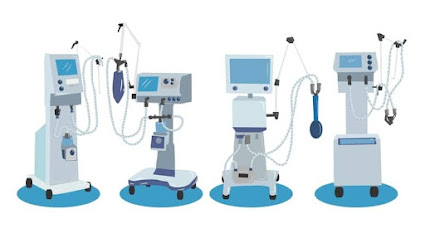Diabetes Monitors Market – Overview
The
rise in the number of cases for diabetes is surging around the world and has
necessitated the growth of diabetes monitors. Reports that gauge the healthcare
industry have been made available by Market Research Future which creates
reports on several industry verticals that review the market growth and
prospects. The Diabetes Monitors
Market share is projected to rise at a CAGR of 7.8 % in the forecast
period 2023-2032.
The
large patient base diagnosed with diabetes is a key driver for the demand of
the diabetes monitors market insight. The nature of diabetes as an ailment
requires constant monitoring is expected to contribute to the development of
the diabetes monitors market positively. The presence of factors such as growth
in technological innovations and rising research funding levels is anticipated
to spur the progress of the market in the forecast period.
Competitive Analysis
The
advancement of the market is projected to capture amplified impetus in the
coming years chiefly due to the incidence of contributory government plans. The
escalated turnaround in the market is likely to set off new openings for the
development of the market. The enhancement in different domestic economies is
projected to encourage the progress of the market in the impending period. The
ease in accessing key planned opportunities important to consequent
stabilization of inflation is projected to generate a promising option for
development in the approaching years. In the approaching years, the control
exerted by fairly high-income level nations around the world and the likely
gains observed towards a few of the currencies around the world is projected to
strengthen the fruition of the market in the forecast period. A significant
climb in the number of backers in the market is expected to craft an
advantageous state of affairs for the evolution of the market in the projected
period.
The
Diabetes Monitors Market Players are
Abbott
Laboratories,
Panasonic,
Dexcom,
Inc.,
F.
Hoffmann-La Roche Ltd,
Medtronic,
Sanofi,
LifeScan,
Inc., and
others.
Segmental Analysis
The
segmentation of the diabetes monitors
market outlook is conducted on the basis of component, type, sample,
region, and end-users. Based on the sample, the diabetes monitors market is
segmented into sweat samples, blood samples, urine samples, and others. By
type, the diabetes monitors market is segmented into continuous glucose
monitors, point sample test based glucose monitors, and enzyme-free sensor
based glucose monitors. The continuous glucose monitors are additionally
segmented into re-usable sensor based CGM and disposable sensor based CGM. Based
on the components, the diabetes monitors market is segmented into glucose test
strips, lancet, and sensors. The sensors are additionally segmented into
enzyme-free sensors and enzyme-based sensors. By the end -users, the diabetes
monitors market is segmented into hospitals, diagnostic clinics, and home.
Based on regions, the market comprises of the Middle East, Europe, Asia
Pacific, Africa, and the Americas.
Detailed Regional Analysis
The
regional analysis of the diabetes monitor market includes regions such as the
Middle East, Europe, Asia Pacific, Africa, and the Americas. The Americas
region is controlling the diabetes monitors market due to the existence of a
huge patient population, elevated healthcare expenses, and the existence of the
important players. Due to the soaring incidence of the condition, private
organization, companies, and government associations are aggressively taking
part in improving diabetes care. The European region holds the following
position in the diabetes monitors market. It is likely that the support offered
by the government bodies for research and development, along with a presence of
sophisticated technology is driving the market in the European region.
The
Asia Pacific region is projected to be the fastest mounting region through the
forecast period. The escalating need for cost-effective glucose monitoring
devices, quickly improving technology, and the incidence of a huge patient pool
is driving the 000expansion of this market in the Asia Pacific region. The
Middle East and African region holds the smallest share in the market due to
the incidence of underprivileged and slow rising countries, chiefly, in the
African region.
About US:
Market
Research Future (MRFR), enable customers to unravel the complexity of various
industries through Cooked Research Report (CRR), Half-Cooked Research Reports
(HCRR), Raw Research Reports (3R), Continuous-Feed Research (CFR), and Market
Research & Consulting Services.
Contact us:
Market
Research Future (part of Wantstats Research and Media Private Limited),
99
Hudson Street,5Th Floor, New York,
New
York 10013
United
States of America
